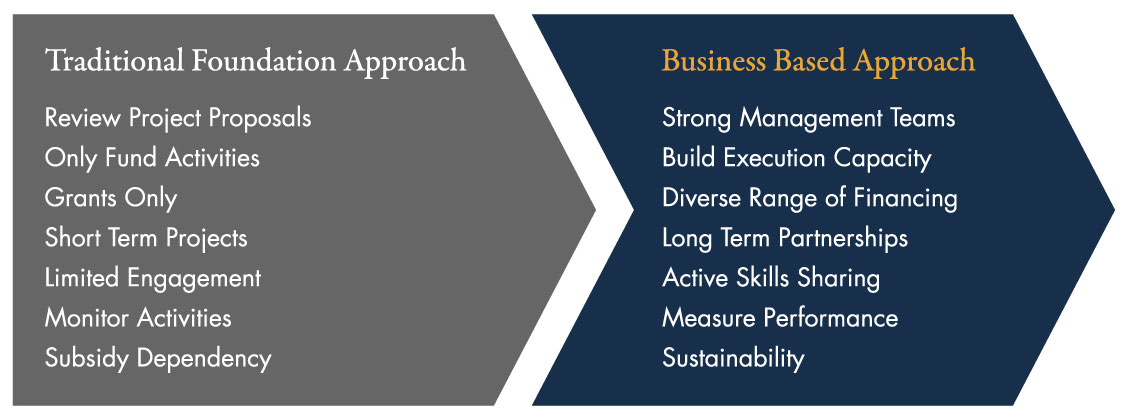As in the business world, successful philanthropy is based not just on supporting good ideas, but backing management teams with the right execution capacity to achieve these goals. Some of the very many lessons we have learned through our experience include:
- Focus on selecting good teams to support: does the management team have the commitment, competence, capacity and willingness to share risk that are key to successful execution?
- Provide unrestricted funding: If you trust a management team, then give them unrestricted funding to ensure they build the core capacity essential to viable growth and lasting impact.
- Money is necessary but not sufficient: Few, if any, problems are solved by money alone. Your partners will need wider technical, business, financial and governance support. Non-financial support is critical to their success.
- Do not fixate on overheads: Good execution requires quality talent and robust systems just like a business. Focus not on overheads but the cost of impact. Strong teams with robust systems will scale-up and drastically reduce their cost per impact over time.
- Remain patient: Helping to solve development challenges is hard. Early adopters of any new product or service are seldom the poorest. So accept that it may take longer than you hope to achieve impact at scale
- Select impact metrics that are meaningful to your partners: Do not impose unnecessary costs on partners to collect data that is not meaningful to them. Instead, help partners set metrics that enable them understand whether they are helping the people they intend to benefit. Its part of what is called customer feedback in the business world.
- Stay focused on impact: The greatest risk is for a philanthropist to exit too early from a partner that is starting to succeed. If they are good at execution and are delivering impact – then keep supporting them.
- Share you the lessons you learn: Celebrate success, but also be open and honest about things that did not go to plan. It will help others use their philanthropy more effectively.
History
Over the past two centuries, philanthropists have tried their best to improve the lives of the poor or protect natural resources. The majority of philanthropic capital has been deployed in the form of traditional grants (non-returnable grants) to non-governmental organizations (NGOs). Yet the common characteristic of the charitable sector is that the majority of NGOs are under resourced and live “hand to mouth”, largely fiscal year to fiscal year. To a great extent, this is due to the fact that most grants are:
- Short-term and unpredictable, meaning that charities continually have to devote scarce resources to fundraising
- Restricted and do not support “overheads”; thus preventing organizations to develop core capacity and deploy their funding effectively
- Structured to offset costs rather than to achieve pre-agreed “outcomes” or performance based
- Not structured in ways that enable organizations to raise other sources of capital
Despite philanthropic capital representing society’s highest source of risk capital, non-returnable grants are often structured in ways that constrain the ability of recipients to realize their potential effectiveness or scale of impact. Equally, traditional grant making enhances a dependency culture and exposes donors to reputational risks when they decide to exit further support.
While non-returnable grants remain a hugely important element of philanthropy, it is increasingly recognized that this 19th century financial instrument is neither sufficient nor appropriate to solving the significant global development challenges of the 21st century.
Our experience is that shifting from traditional philanthropic approaches to more business-based approaches, commonly referred to as venture philanthropy, can significantly increase impact.
